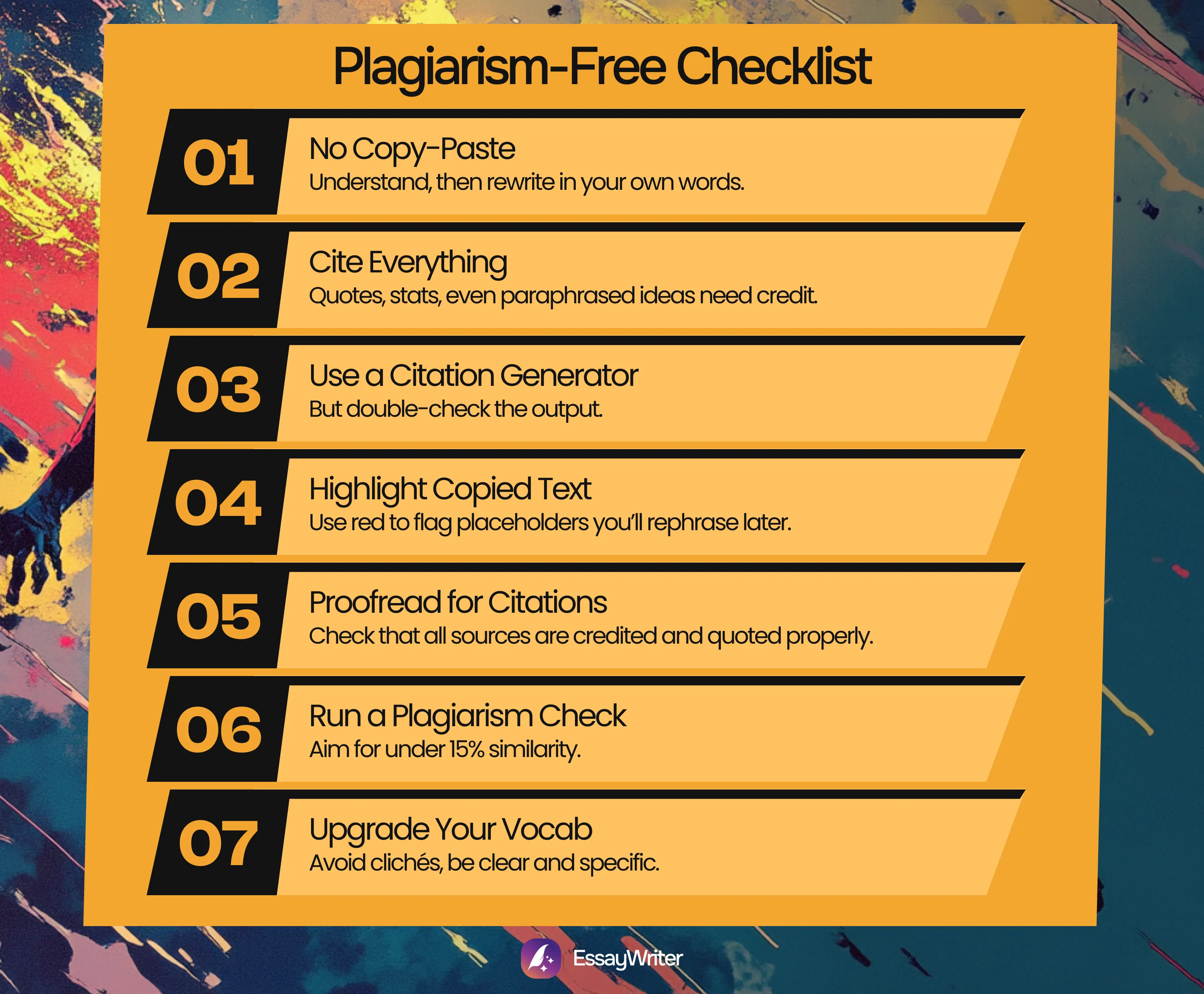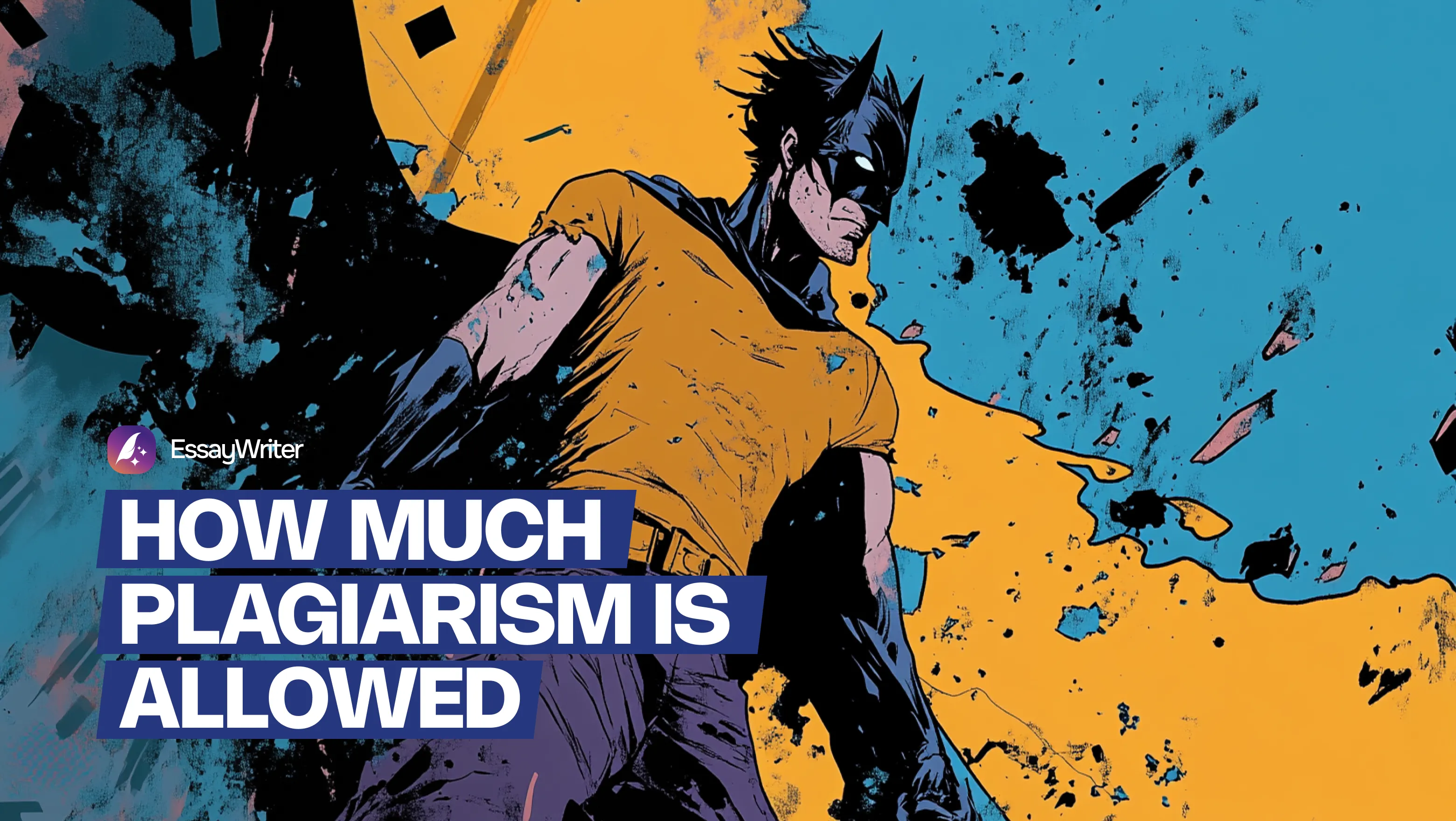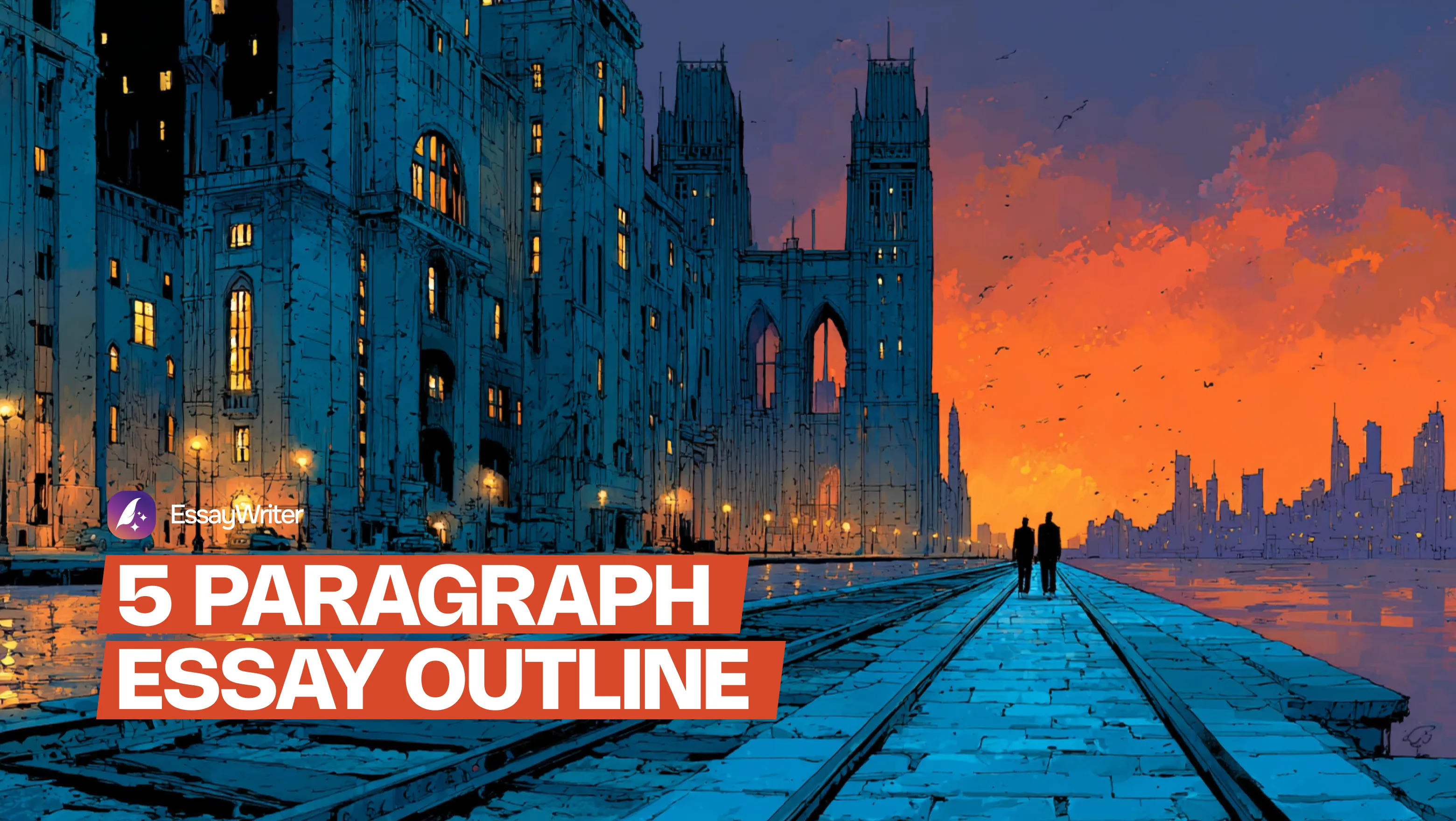Nobody wants to be called out for plagiarism. But with so much information out there, it’s easy to wonder where the line really is. One might wonder how much plagiarism is allowed before the work is flagged, rejected, or worse. The truth is, there’s no universal answer. It depends on your school’s policy, the type of assignment, and how the content is used.
Still, understanding plagiarism policies in general can help you avoid trouble and protect your academic reputation. In this guide, we’ll break down what counts as plagiarism, what percentage might be acceptable, and how to keep your writing original without the stress.
Worried About Plagiarism?
EssayWriters offers professional writing services for students who want original, plagiarism-free work.
Get Help
What Percentage of Plagiarism Is Acceptable for Different Types of Writing
So, what percentage is considered plagiarism? Well, usually many programs start paying attention somewhere between 10-20%.
However, the context of the matches is just as important as the number itself. Bibliographies, short quotations, and fixed phrases often inflate the score without suggesting plagiarism. By contrast, a block of borrowed arguments in your main analysis raises much more serious concerns.
The stakes also shift with the type of work under review. A seminar reflection may allow some leniency, while a dissertation or journal article is scrutinized far more closely.
Safe practice blends craft with checks. Here’s what to do:
- Build your paragraphs from notes written in your own words, away from the source.
- Synthesize at the idea level before you touch phrasing.
- Quote when language itself matters.
- Paraphrase by re-explaining, not re-arranging.
- Run a similarity scan near the end as a metal detector, then fix what beeps.
If you want a numerical anchor, aim for a post-cleanup score well under 15% once quotes and references are excluded.
One more piece that trips people up is self plagiarism. This means reusing your past assignment without clear permission counts as academic dishonesty in most places.
Plagiarism in General Academic Writing and Essays
When it comes to general academic writing and essays, most schools rely on plagiarism checkers to catch copied content. And while every instructor loves to say plagiarism should be zero, the reality is a bit more flexible. If you’ve ever wondered how much plagiarism is allowed in an essay, you’re not alone. Usually, the safe zone is under 15%. That number gives you some room for common phrases, citations, or small technical errors from plagiarism software.
But if your report shows more than 15%, that’s when things start to look suspicious. Anything over 20% is a major red flag; it suggests the copying wasn’t accidental. And schools take that seriously.
So, if you’re working on general academic writing and essays, aim for less than 15%, cite everything properly, and check your work before submitting. Staying careful is always easier than explaining plagiarism later.
How Much Plagiarism Is Allowed in Thesis and Dissertations
Theses and dissertations are a whole different story when it comes to plagiarism rules. And for a good reason. These are considered probably the most serious academic projects that take months - sometimes years - to complete. That’s why the expectations are much stricter.
Universities are strict when it comes to plagiarism in major academic work, which is why it's important to understand what percentage of plagiarism is acceptable in thesis and dissertation writing before you submit anything. Most universities stick to a very low limit, usually around 10%. Some may allow up to 15%, but only if the matches come from properly cited sources or technical terms that can’t be changed much.
If your thesis or dissertation shows more than 10-15% similarity, it could raise questions about originality and academic honesty. Since these papers are often published or stored in university databases, plagiarism checks are mandatory.
To stay safe, always cite your sources, paraphrase carefully, and aim for a similarity score well under 10% if possible.
How Much Plagiarism Is Allowed in Published Journals
When it comes to published journals, the rules are extremely strict. These papers are meant to offer new ideas, original research, and fresh perspectives, so naturally, copied content is taken very seriously.
The allowed plagiarism in journal papers is usually no more than 5-10%. Even then, that small percentage only applies to common phrases, definitions, or technical terms that can't really be changed. If your paper includes copied arguments, data, or analysis without proper citations, it will almost always be rejected.
Most journals run submissions through plagiarism checkers before publication, and any similarity score above the limit can lead to serious consequences. Some journals may even blacklist authors who submit plagiarized work.
If you plan to submit a paper for publication, keep the allowed plagiarism in journal papers in mind. Always check your work, cite everything correctly, and aim for an originality score under 5% to stay on the safe side.
How Much Plagiarism Is Allowed in Research Papers
Research papers fall somewhere in the middle when it comes to plagiarism rules. They aren’t as strictly checked as published journals, but the expectations are still pretty high. After all, research papers are meant to show your own analysis, ideas, and conclusions - not just repeat what’s already out there.
If you're also wondering how much plagiarism is allowed in a research paper, you should know that most universities set the limit at 10-15%. This small percentage usually covers common terminology, definitions, or properly cited material. But if your similarity score goes above that, it could signal that too much of your work relies on someone else’s words.
Research papers with a high plagiarism percentage often need to be revised or won’t be accepted at all. To avoid that, focus on original writing, paraphrasing, and correct citations. Keeping your plagiarism score under 10% is always a smart move if you want your research paper to pass without issues.
How Much Plagiarism Is Allowed in Term Papers
Although term papers can be less formal than a thesis or a research paper, plagiarism rules still apply. These assignments show your understanding of the subject, so copying large parts of someone else’s work won’t go unnoticed.
When it comes to plagiarism in term papers, Most schools stick to the general rule of 15-20%. This small allowance usually covers common phrases, definitions, and properly cited material. But if your plagiarism report shows anything above 20%, that’s a clear sign you need to rewrite your paper.
Plagiarism can be unintentional, but high scores can still lead to lower grades or requests for rewrites. To avoid complications, write in your own words, use proper citations, and aim for a plagiarism score under 15%. Remember, an extra effort here saves you a lot of stress later.
Checklist on How to Avoid Plagiarism Before Submitting Your Paper
Staying plagiarism-free isn’t as hard as it sounds. If you’re unsure about what percentage of plagiarism is acceptable or how to stay on the safe side, here’s a checklist for avoiding plagiarism before you submit your paper.

- Avoid Direct Copying or Lazy Paraphrasing
Skip the copy-paste routine - it won’t do you any favors. Instead, read your sources like you actually want to understand them. Jot down key ideas in your notes, close the book or article, and then explain it all in your own words. That way, you’ll avoid accidental plagiarism and sound way more like you.
- Cite Every Source Properly
If the idea isn’t yours, cite it. Simple as that. Whether your school asks for APA, MLA, Chicago, or Harvard style, make sure you follow the rules. Quotes, stats, images, and weird facts from the internet need a proper citation. And remember, just changing the wording doesn’t mean you can skip this step. Paraphrased content needs credit, too.
- Use a Citation Generator
Online citation tools can save a lot of time. They help format your references quickly and correctly. Just remember to double-check them. These tools aren’t perfect, and small mistakes can slip in.
- Highlight Copied Text Temporarily
If you copy parts of a source into your draft for later paraphrasing or citing, highlight it in a bright color; red is a good warning sign. This makes sure you don’t accidentally leave copied text in your final paper without rephrasing or citing it properly.
- Proofread for Missing Citations
Before you submit anything, read your paper from start to finish. Make sure that every idea, fact, or quote that's not yours has an in-text citation. List all your sources in the bibliography or reference section. Don’t leave any quotes without quotation marks.
- Run Your Paper Through a Plagiarism Checker
Whenever you doubt your originality, use an online plagiarism detection tool. It will highlight sections that may be too close to your sources and give you a percentage score. Aim to stay under 15% to be safe.
- Improve Your Vocabulary
One reason students plagiarize unintentionally is writing overused phrases found all over the internet. Stay away from clichés like ‘sky’s the limit’ or ‘easy as pie.’ In academic writing, clear and specific language is always better than worn-out expressions. Use subject-specific terms when needed, but avoid filling your paper with generic phrases that everyone uses.
Final Words
Even if deadlines are creeping up, plagiarism is not worth the risk. If you’re asking what percentage of plagiarism is allowed, the short answer will be that most schools place the safe range at 10-15%. Still, aiming lower gives you more protection. Clear citations, original arguments, and a final proofread keep your writing credible and free from unnecessary problems.
And if you ever feel stuck, need writing guidance, or want a plagiarism-free paper, EssayWriters is always ready to help you out.
FAQs
What Percentage Is Considered Plagiarism?
How Much Plagiarism Is Allowed In College?
What Are The Best Ways To Avoid Plagiarism?
University of Oxford. 'Plagiarism.' Accessed April 14, 2025. https://www.ox.ac.uk/students/academic/guidance/skills/plagiarism.
Recommended articles



